There are many locks available for WSU cabinets with different functionalities:
- Cylinder locks with a key
- Cylinder locks with a padlock
- Mechanical combination locks
- Electronic combination locks
- Coin locks
- Locks using RFID technology
Cylindrical locks with a key in the Malow offer
Cylinder locks, i.e. those with a key, are the simplest type. They are characterized by long service life and work great in places where cabinets are assigned to specific people. Each user has their key, and the administrator - the mother (master) key.
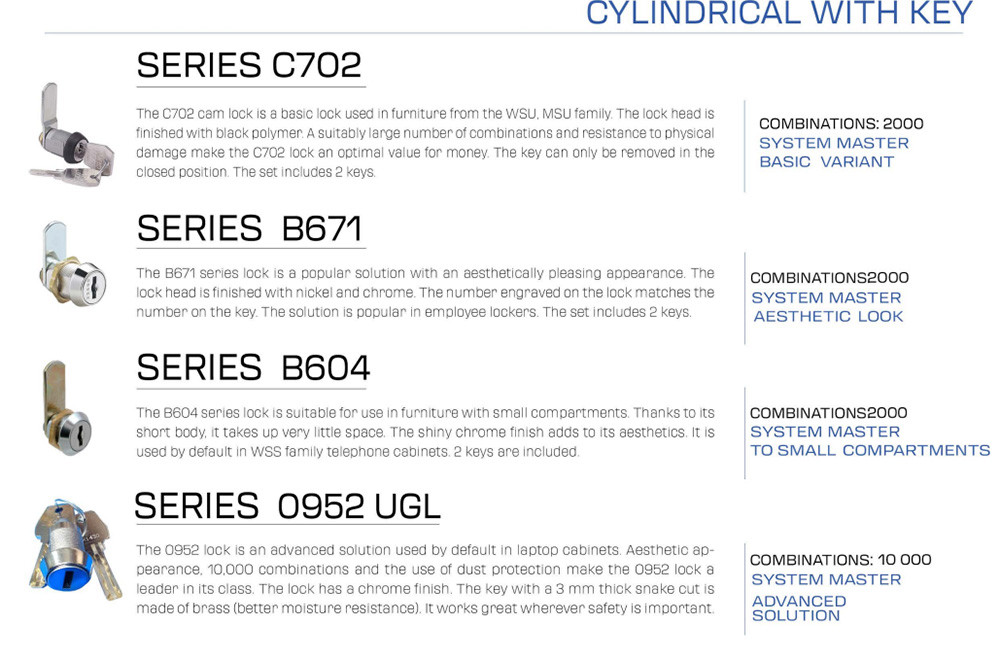
Cylindrical padlocks
Padlocks are great for places where lockers aren’t permanently assigned to a user. An example would be a school where kids change lockers depending on their level of education. In these cases, padlocks are ideal because they can secure the lock.
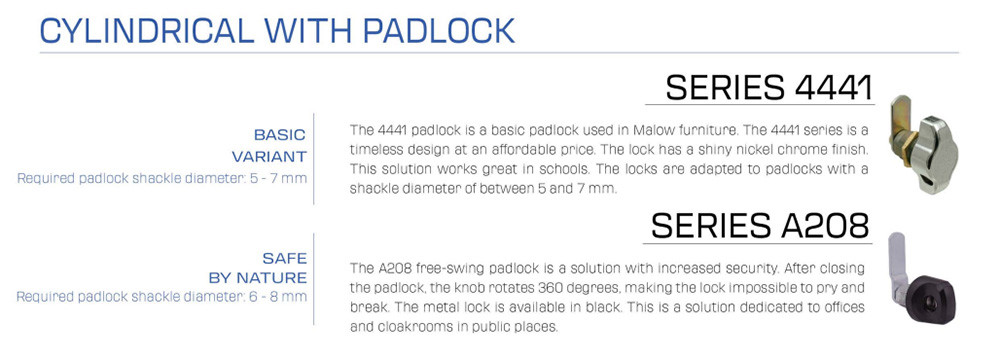
Private vs. Public Mode
The descriptions of combination and electronic locks often use the terms public and private. In reality, they are very easy to decipher.
Private Mode – The lock is assigned to a single user, so the code to the lock remains the same each time it is used. The user changes the code only when necessary. This type of lock is recommended for employee changing rooms and offices, where users do not change often.
Public Mode – The lock is designed for multiple users, which means that the code to the lock is different each time. The code is set each time before closing the lock. The user must remember what code they set to be able to open the lock. This type of lock works well in public places, where user turnover is high.
Mechanical combination locks
Mechanical combination locks are a reliable and durable solution. There are many reasons to use a combination lock, which is why they are used in various places. Combination locks are popular in schools because they minimize the risk of a child losing a key. They are also convenient in places where many different people use lockers. They can then exchange lockers and use the one that is currently free.
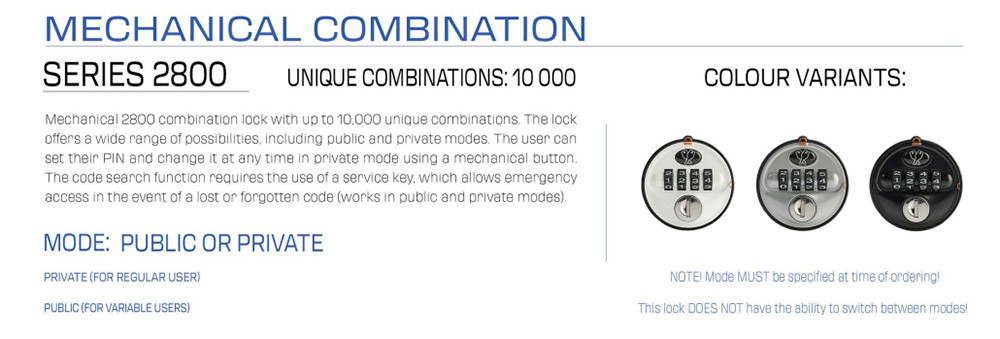

Electronic combination locks
Electronic combination locks operate on a principle similar to mechanical locks. The main difference from a mechanical lock is a keypad containing 10 digits, which gives a much larger number of code combinations.
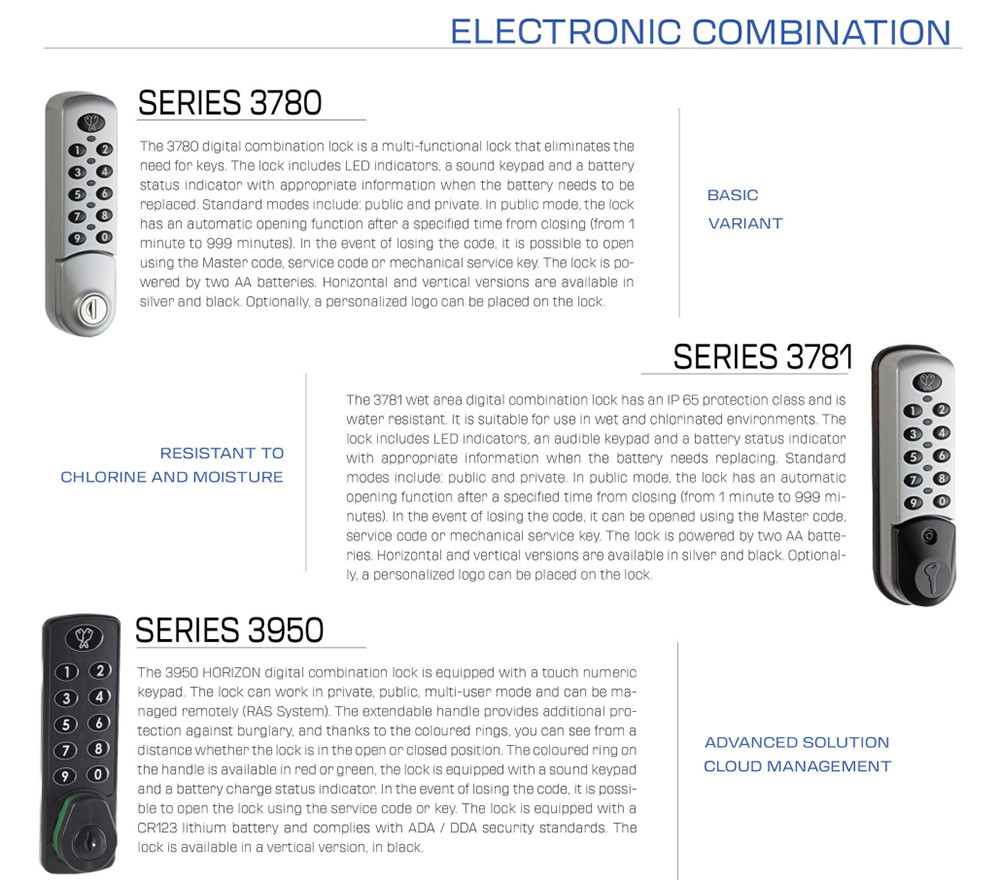
Coin-operated deposit locks
Coin-operated locks are useful in public places. Inserting a coin unlocks the lock, allowing the key to be turned and removed. Reopening the lock requires a key. After inserting it into the lock and opening the door, the coin can be removed. It is also possible to use a coin container and charge for using the deposit box.


RFID Electronic Locks
EElectronic locks using RFID technology are the most advanced locks available in the standard Malow offer. RFID locks are a standalone system, which means that no additional infrastructure is required. The most popular lock in the Malow offer is VERSA RFID - the successor to the SOLA model. A dedicated programmer is required to program RFID locks. An electronic master key is also available.
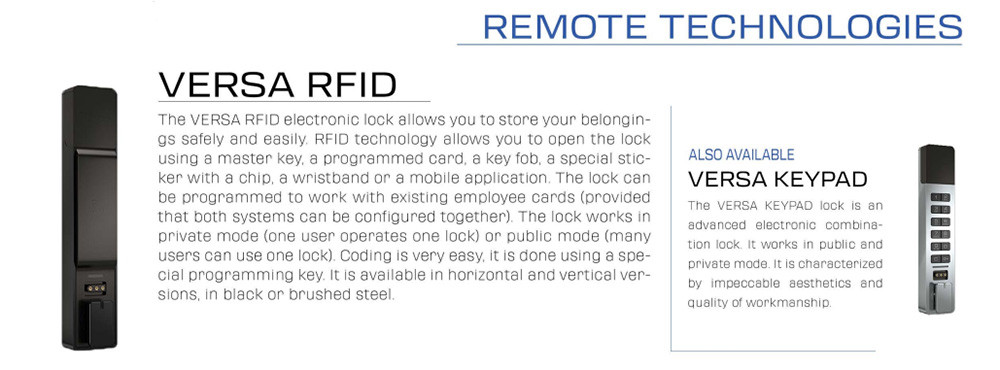
Download the VERSA RFID manual

